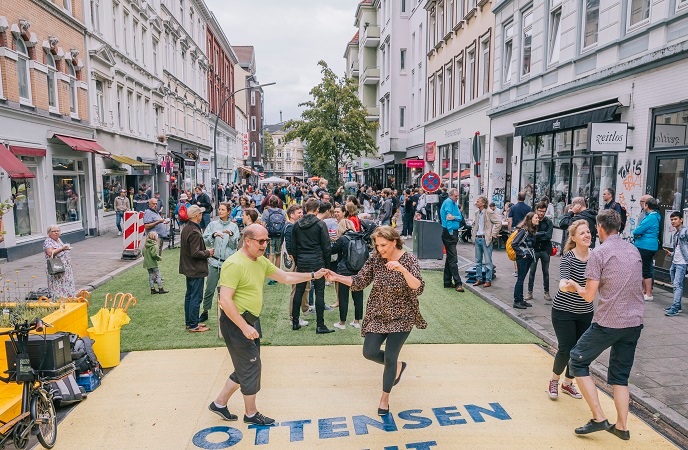Giving citizens a stand to improve their cities
Commuters usually face various problems associated with convenience, access to live information and infrastructure. These issues must be addressed to improve mobility experience across Europe and make cities a better place to live.
Including citizens in urban mobility design
The EU-Horizon2020-funded CIVITAS Cities-4-People project is a CIVITAS initiative which aspired to make transportation more sustainable, people-oriented, and accessible. With demand-driven and locally designed mobility solutions, it tapped into participatory and sustainable urban planning. Aiming to implement mobility solutions developed by the people for the people, CIVITAS Cities-4-People tapped into participatory practices of social innovation and neighbourhood governance. The project built on three main pillars: citizen participation, community empowerment and sustainable urban planning. “Our project has empowered local communities to engage and interact towards changing their city for the better,” explains project coordinator Isabel Froes from Copenhagen Business School. Partners have set up citizen mobility communities in five areas across Europe (Budapest, Hamburg, Istanbul, Oxfordshire and Trikala) and implemented five pilot programmes. The CIVITAS Cities-4-People team tested the effectiveness of prototype and pilot innovative and smart mobility solutions that address pressing and real urban mobility challenges.
Improving mobility network in European cities
Citizens of Budapest joined forces to transform the mobility landscape of the city, focusing on bringing people closer to the Danube riverbank. This initiative was undertaken in collaboration with mobility providers and involved the design of a busy transport hub that includes e-cars, scooters and bikes. The usage of this environmentally friendly and sustainable means of transport has enabled citizens to reach their destination on time and at lower costs compared to using their own car. Up to now, more than 30 000 users have benefitted from the service. The municipality of Üsküdar in Istanbul is a densely populated region and mobility is complicated, especially for vulnerable groups, such as the elderly, children, and people with impairments. CIVITAS Cities-4-People installed resting points such as benches and improved pavement conditions for visually impaired citizens. In addition, renovation of the pavement and lighting in Salih Solman Park was intended to make it ‘everyone’s garden’. Such practices are expected to extend to other green areas in the city. To address traffic congestion around Oxfordshire, CIVITAS Cities-4-People implemented transport services on demand. These include a shopper service and a connector that transfers people from peripheral villages to the Barton shopping centre.
Enhancing European city infrastructure
Expanding the bike infrastructure was the predominant solution that citizens of Altona, an urban borough of Hamburg, chose to implement. Τhe city installed bike racks including racks for cargo bikes on roads used by cyclists after receiving input from local stakeholders. Altona added sprayed-on logos on the ground to distinguish cargo bike racks. Trikala citizens expressed their wish to combine different activities in the centre where all services are gathered. To accommodate this, CIVITAS Cities-4-People installed storage lockers at the central info point for people to leave their heavy luggage. Alongside pedestrianisation of the streets around the main square, this solution is expected to reduce traffic in the centre and facilitate cycling and walking. Trikala has also provided electric scooters for citizens with mobility impairment to move around the centre of the city.
Lessons learned
Besides the permanent solutions implemented during CIVITAS Cities-4-People, the project underscored the importance of citizens in the co-creation process, especially when it comes to neighbourhood mobility. To raise awareness of this fact, project partners collaborated with other projects (Metamorphosis, SUNRISE and Looper) to produce a ‘Big Messages’ brochure to encourage citizen participation in the urban planning of their neighbourhood.
Keywords
CIVITAS Cities-4-People, mobility, citizens, cities, transport, infrastructure, co-creation, urban planning



